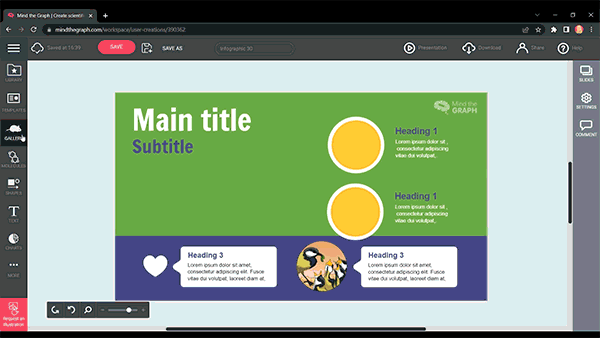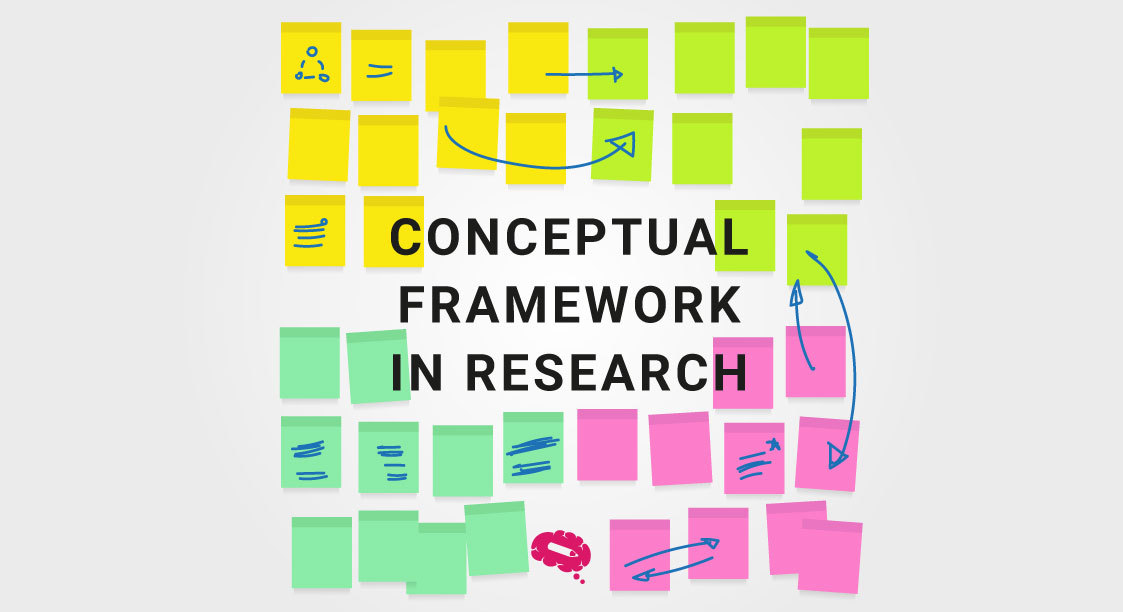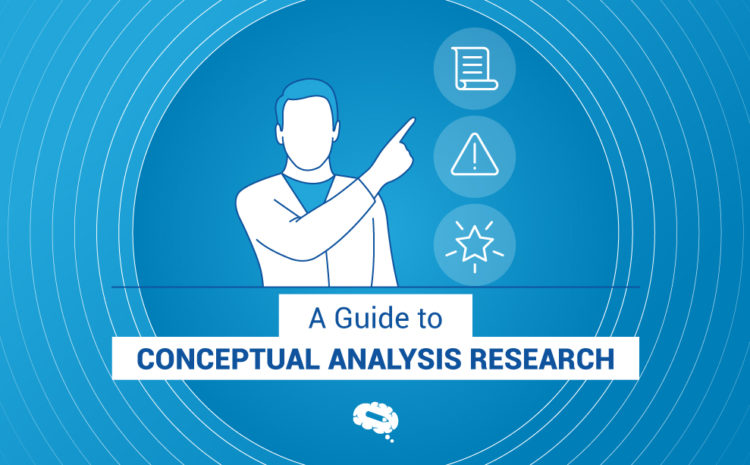Research is a systematic process of inquiry that involves gathering and analyzing information to answer questions and solve problems. Conducting research is an essential activity in various fields, including business, education, healthcare, and social sciences. In research, a conceptual framework is a critical element that guides the study and helps to organize and interpret the collected data. In this article, we will discuss the definition of a conceptual framework, its purpose and importance in research, and the steps involved in developing a conceptual framework.
What is Conceptual Framework
A conceptual framework is a structure that provides a theoretical or conceptual foundation for research, allowing researchers to examine and analyze complex phenomena. It is a tool that researchers use to guide the research process by defining the key concepts, ideas, and theories that underpin their study. The conceptual framework can help to identify the research questions, the variables that will be studied, and the relationships between them. It can also provide a way to visualize the research problem, clarify the research methodology, and explain the research findings.
Purpose and Importance of a Conceptual Framework in Research
The Purpose of a Conceptual Framework in Research
The purpose of a conceptual framework in research is to provide a clear and concise understanding of the key concepts, variables, relationships, and assumptions that underlie a research study. Specifically, a conceptual framework serves several purposes:
Helps to clarify research questions: A well-developed conceptual framework helps to define the research problem and the specific research questions that the study seeks to answer.
Provides a theoretical basis for the study: The conceptual framework provides a theoretical foundation for the study, drawing on existing theories and concepts to guide the research process.
Guides data collection and analysis: The conceptual framework helps to identify the relevant variables and relationships that need to be studied, and guides the collection and analysis of data.
Ensures research validity and reliability: The conceptual framework helps to ensure that the study is focused, relevant, and valid, and that the data collected is reliable.
Helps to make conclusions and recommendations: The conceptual framework provides a basis for making conclusions and recommendations based on the collected data, contributing to the existing body of knowledge in the field.
The Importance of a Conceptual Framework in Research
Provide a basis for research design: The conceptual framework provides a blueprint for the research study, outlining the key concepts, variables, and relationships between them. This helps researchers to design a study that is logical, structured, and focused.
Guide data collection and analysis: The conceptual framework helps to identify the variables and relationships that will be examined in the study. This helps researchers to collect and analyze data that is relevant to the research question and hypothesis.
Ensure validity and reliability: A well-developed conceptual framework helps to ensure that the research is valid and reliable. It ensures that the research is measuring what it intends to measure and that the results are consistent over time.
Facilitate communication: The conceptual framework provides a common language and understanding for researchers, facilitating communication and collaboration among team members.
Identify gaps in existing knowledge: The conceptual framework helps to identify gaps in existing knowledge and to develop new insights and theories.
A well-developed conceptual framework is crucial to the success of a research study. It provides a clear and logical structure for the study, helps to ensure validity and reliability, and facilitates communication and collaboration among researchers.

Steps to Developing a Conceptual Framework
Developing a conceptual framework involves several steps. These steps are outlined below:
1. Choose a research question
The first step in developing a conceptual framework is to identify the research question. This question should be clear, specific, and relevant to the study. It should be formulated based on a review of the existing literature and the identification of gaps in knowledge or areas where further research is needed. Read our Research Question article to learn more about it.
2. Identify the main variables
The next step is to identify the main variables that will be studied. These variables should be measurable, observable, and relevant to the research question. The independent variable is the variable that is manipulated or controlled in the study, while the dependent variable is the variable that is measured or observed. The independent variable is usually the cause, while the dependent variable is the effect. Read our Research Variables content to understand it better.
3. Visualize the cause-and-effect relationship
The next step is to visualize the cause-and-effect relationship between the independent and dependent variables. This can be done by creating a diagram or a flowchart that illustrates the relationship between the variables. The diagram or flowchart should clearly show the direction of the relationship, whether it is positive or negative, and the strength of the relationship.
4. Identify other influencing variables
The researcher should also identify other variables that may influence the relationship between the main variables. These variables can be included in the conceptual framework, they are known as confounding variables and should be identified and controlled in the study.
5. Include moderating and mediating variables
Moderating and mediating variables should be included in the conceptual framework if they are relevant to the study. Moderating variables affect the strength or direction of the relationship between the main variables while mediating variables explain the relationship between the main variables.
6. Consider control variables
Control variables are variables that are held constant in the study to ensure that the results are valid and reliable. These variables should be included in the conceptual framework to ensure that the study is well-controlled.
7. Revise and refine the conceptual framework
Once the conceptual framework has been developed, the researcher should revise and refine it to ensure that it is clear, concise, and comprehensive. The conceptual framework should be reviewed to ensure that it accurately represents the research question and the variables involved in the study.
Moderating Variables
Moderating variables are variables that can modify or change the strength or direction of the relationship between the independent and dependent variables. These variables can be included in the conceptual framework to help explain the results of the study. For example, in a study on the effects of exercise on weight loss, age, and gender may be moderating variables that can affect the strength of the relationship between exercise and weight loss.
Mediating Variables
Mediating variables are variables that help to explain the relationship between the independent and dependent variables. These variables may be included in the conceptual framework to help identify the mechanisms through which the independent variable affects the dependent variable. For example, in a study on the effects of exercise on weight loss, metabolism, and calorie intake may be mediating variables that help to explain how exercise affects weight loss.
Moderator vs Mediator
It is essential to understand the difference between a moderator and a mediator in research. Here is a table that highlights the differences between moderators and mediators in a theoretical framework:
| Moderator | Mediator |
|---|---|
| Affects the strength or direction of the relationship between the independent and dependent variables. | Explains the relationship between the independent and dependent variables. |
| Changes in the relationship between the independent and dependent variables depending on the levels of the moderating variable. | Helps to clarify how the independent variable affects the dependent variable. |
| Often categorical or continuous variables can be measured. | Often intervening variables that are not directly observable and require further analysis. |
| Can be included in the research design to control for confounding variables. | Used to test for causal relationships between the independent and dependent variables. |
| Example: Gender, age, education level. | Example: Attitude, perception, motivation. |
| Can be included in the regression model as an interaction term. | Can be included in the regression model as a mediating variable. |
Control Variables
Control variables are factors that are held constant or unchanged in a study or experiment. In a conceptual framework, control variables refer to the variables that are kept constant or held fixed during the study to ensure that the effect of other independent variables on the dependent variable is not confounded or influenced by any other factor. For example, in a study on the effects of exercise on weight loss, the type of exercise, duration of exercise, and frequency of exercise may be control variables that are held constant to ensure that the results are not affected by these factors.
The Final Analysis
A conceptual framework is a critical element in research that provides a theoretical basis for the study and guides the research process. Developing a conceptual framework involves several steps, including choosing a research question, selecting independent and dependent variables, visualizing cause-and-effect relationships, identifying other influencing variables, including moderating and mediating variables, and controlling variables. It also provides a basis for making conclusions and recommendations based on the collected data. Researchers should pay close attention to developing a robust conceptual framework to ensure that their research is of high quality and contributes to existing knowledge.
Beautiful templates of infographics for every subject
Mind the Graph offers beautiful and easy-to-use templates of infographics for every subject to help scientists and researchers communicate their work effectively. Infographics are an effective tool for presenting complex scientific data in a visual and engaging way, and the platform provides researchers with the means to create them quickly and easily.


Subscribe to our newsletter
Exclusive high quality content about effective visual
communication in science.




